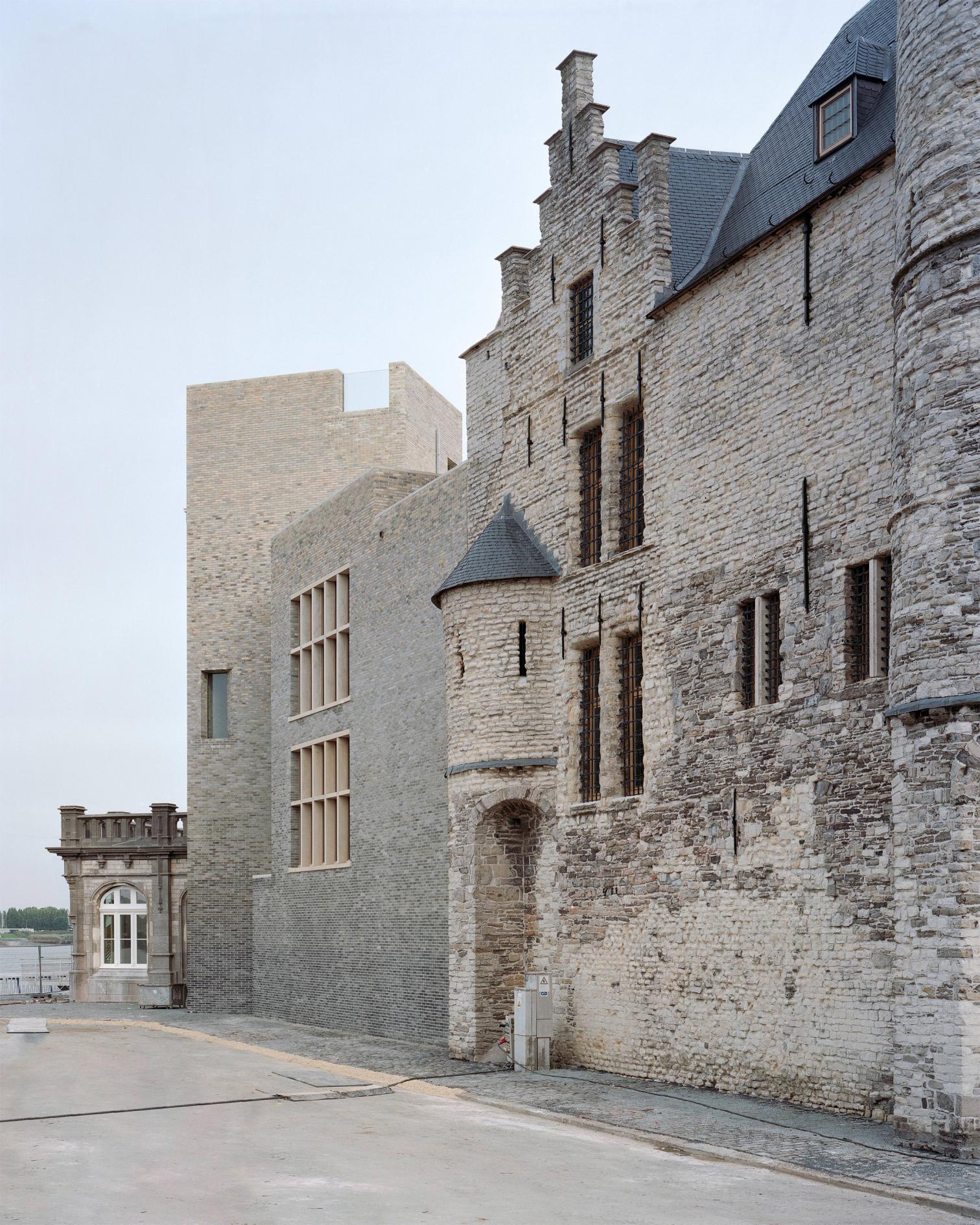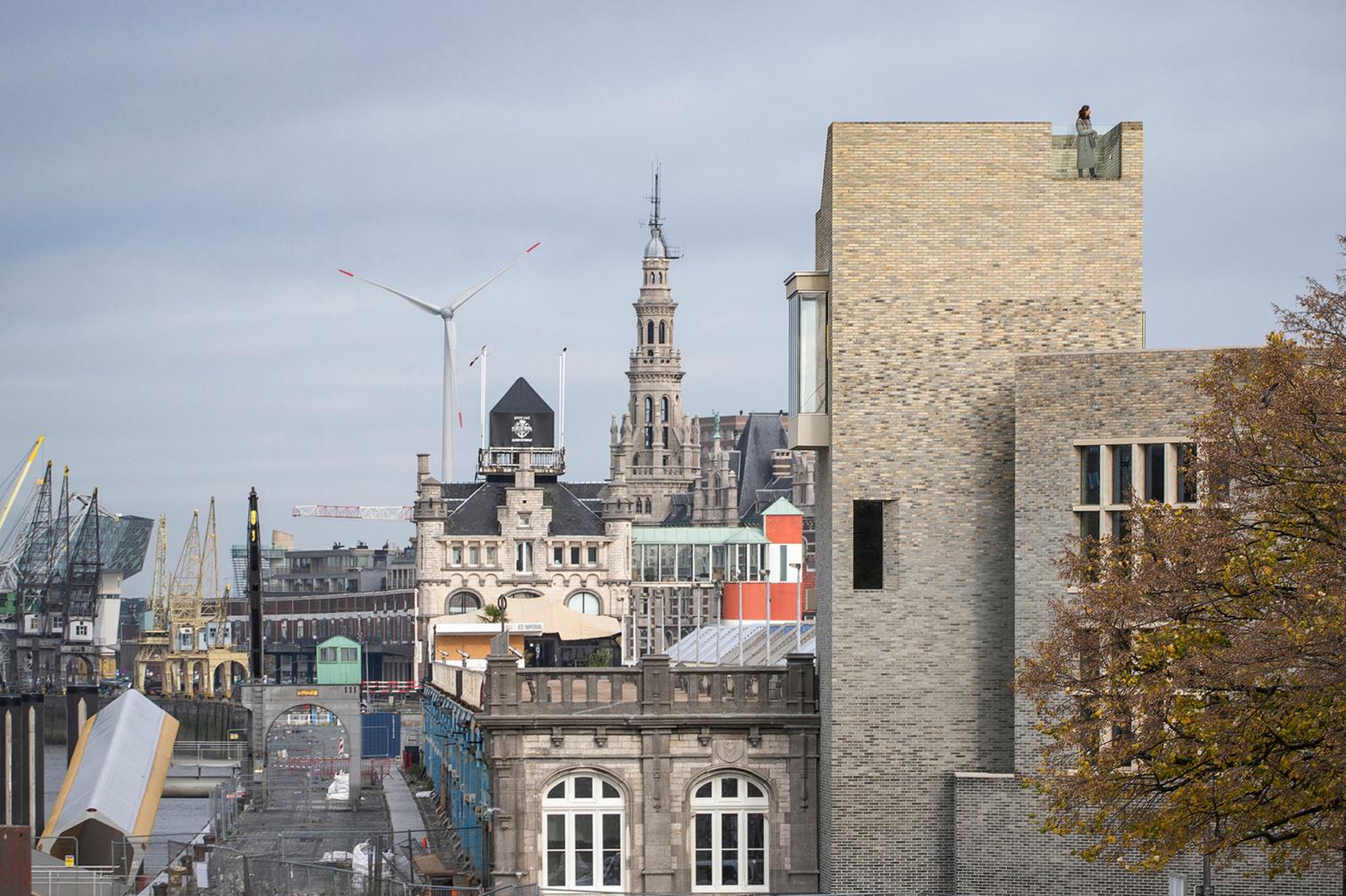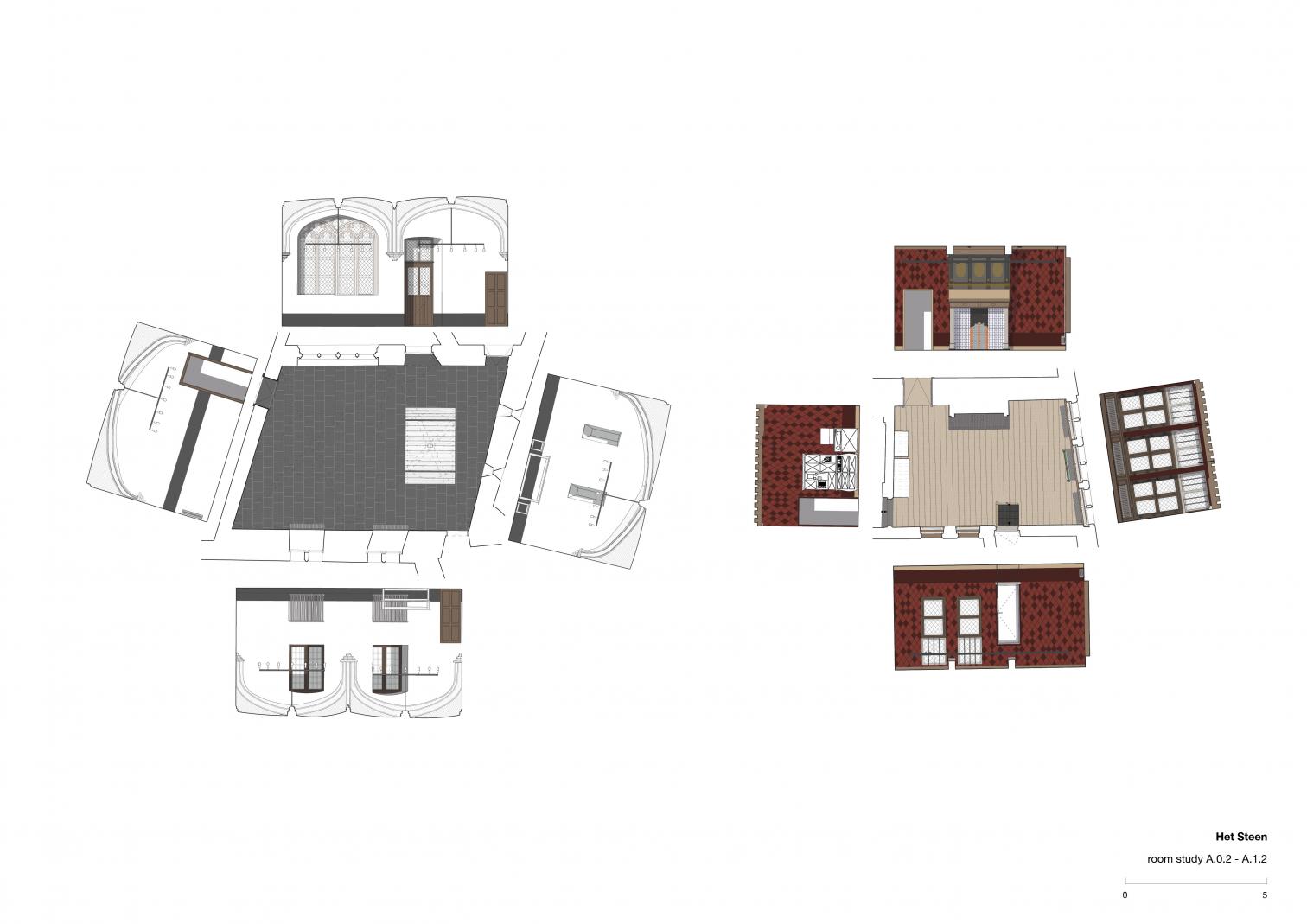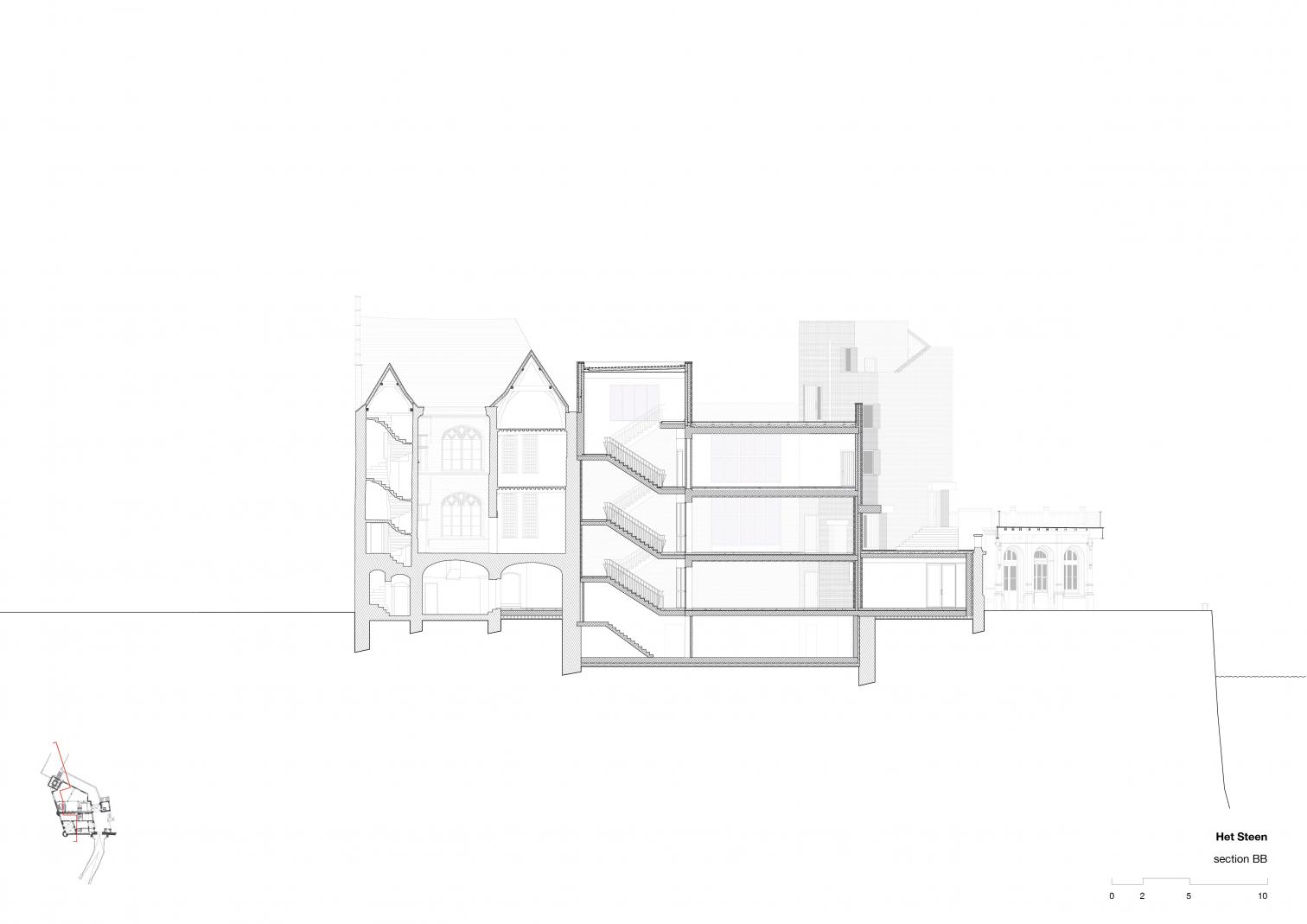Intervention on Het Steen castle in Antwerp
noAarchitecten- Type Refurbishment
- Date 2022
- City Antwerp
- Country Belgium
- Photograph Kim Zwarts Tim Fisher


In 2016, the Belgian firm noAarchitecten won the competition to restore and reuse Hat Steen castle in Antwerp. Focused on historical integration and contemporary functionality, its scheme involved replacing the 1950 extension with a new wing, one more in keeping with the monument’s original character.
Het Steen, whose architectural history goes back several centuries and which was part of the city’s medieval walls, became a detached, freestanding complex around 1890, after the straightening of the river Scheldt. This provided the starting point for an intervention that sought to revive the castle’s imposing presence as an autonmous building.
The new volume, designed by noAarchitecten, adopts a formal language that refers to the original castle, but with a robust contemporary abstraction. With the aim of obtaining a coherent complex, the stone walls, bay windows, eaves, and towers are given a reinterpretation. The facades – built with bricks in a color gradient, determined in collaboration with the artist Pieter Vermeersch – reflect the evolution of materials over the centuries. The colors follow the palette of the old natural stone castle wall: the dark base with lighter-toned stones in the upper layers – a result of the different natural stones used in successive building phases, and of the patina – are carried over into the expansion, albeit with a very gradual gradient.
Inside, sober materials – brick, natural stone, and wood – reinforce the continuity with the past. The intervention does not seek to create ruptures between periods, but a fluid transition between different periods of construction. This ambivalence guided the design strategy throughout.
The intention was clear: to transform Het Steen into the heart of the city’s local tourist infrastructure. Today Het Steen harbors a tourist office, a visitor center presenting the history of Antwerp, and a departure hall for cruises. The restoration, enlargement, and transformation of the premises represent a balance between historical memory and contemporary use.
7th European AHI Award (2025) winners

Photos courtesy of seventh European AHI Awards










